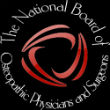The following summary can be used to educate your hospital’s Medical Executive Committee, administrators, colleagues, and patients, about why NBOPAS certification is important:
There is controversy surrounding the requirements for continued certification in a medical specialty. Many physicians believe recent changes requiring physicians engage in various medical knowledge, practice-assessment, and patient-safety activities as well as recertification exams do not provide optimal use of physician’s time. Furthermore, no high quality data exist to justify these labor intensive and expensive activities. The NBOPAS believes the following requirements provide the most appropriate metric for continued certification.
- Candidates must have been previously certified by an American Osteopathic Association member board.
- Candidates must have a valid, unrestricted license to practice medicine in at least one US state. Candidates who only hold a license outside of the U.S. must provide evidence of an unrestricted license from a valid non-U.S. licensing body.
- Candidates must have completed a minimum of 50 hours of continuing medical education (CME) within the past 24 months, provided by a recognized provider of the Accreditation Council for Continuing Medical Education (ACCME). CME must be related to one or more of the specialties in which the candidate is applying. Re-entry for physicians with lapsed certification requires 100 hours of CME with the past 24 months. Physicians in or within two years of training are exempt.
- For some specialties (ie interventional cardiology, electrophysiology, critical care), candidates must have active privileges to practice that specialty in at least one US hospital licensed by a nationally recognized credentialing organization with deeming authority from CMS (ie Joint Commission, HFAP, DNV).
- A candidate who has had their medical staff appointment/membership or clinical privileges in the specialty for which they are seeking certification involuntarily revoked and not reinstated, must have subsequently maintained medical staff appointment/membership or clinical privileges for at least 24 months in another US hospital licensed by a nationally recognized credentialing organization with deeming authority from CMS (ie Joint Commission, HFAP, DNV).
The value of Continuing Medical Education (CME) for life-long learning:
Organizations providing recognized CME programs are regulated by a rigorous accreditation body (ACCME) requiring each CME offering provide an educational gap analysis, “needs assessment,” speaker conflict of interest, course evaluations and many other performance standards. CME can provide education in both established knowledge and also future directions that keep the physician on the “cutting edge.” CME offerings are highly competitive and provide choice. There are numerous organizations offering high value CME activities. If physicians do not perceive value in a particular CME offering, they will go elsewhere. Additionally, most states require CME activities to maintain licensure. Therefore, using CME to fulfill life-long learning requirements provides efficiency and minimizes redundant activities.
Below are links to two opposing “Perspectives” published in the New England Journal of Medicine (Jan 8, 2015) providing some background to the medical certification controversy:
BOARDED TO DEATH — WHY MAINTENANCE OF CERTIFICATION IS BAD FOR DOCTORS AND PATIENTS
http://www.nejm.org/doi/full/10.1056/NEJMp1407422
MAINTENANCE OF CERTIFICATION 2.0 — STRONG START, CONTINUED EVOLUTION
http://www.nejm.org/doi/full/10.1056/NEJMp1409923
Here is a link to a sample letter to your Credentials Committee, MEC, Chief of Staff, administrators, or insurers:
Here is a sample letter for colleagues:
 National Board of Osteopathic Physicians and Surgeons
National Board of Osteopathic Physicians and Surgeons